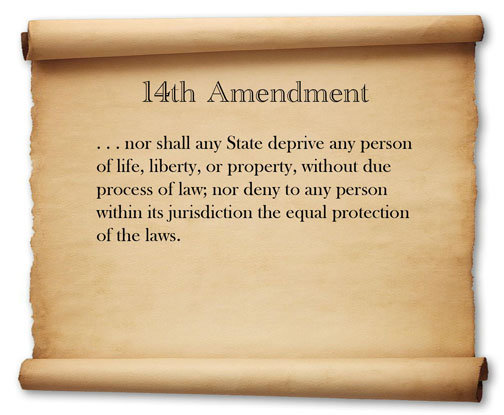Loose Constructionism
Strict constructionism versus loose constructionism is one of the main arguments that dictate the actions of the Supreme Court. The debate between the two has been a prominent discussion in U.S politics since John Marshall’s establishment of the judicial branch as a major force in American politics. Over the years, liberal actions and a progressing society in terms of technology and science has led to Supreme Court justices needing to look beyond the precise wording of the U.S Constitution. Unsurprisingly, this pattern has continued into the modern era, with the last decade in particular demonstrating the Supreme Court’s favoritism towards loose constructionism.
 In the case of US Department of Health v. Florida (2012), Florida argued that the federal government had no right to force Florida to pay for the benefits promised by the Affordable Care Act. They said that, under the Spending Clause, states must accept and voluntarily provide funding, instead of the government coercing them. The U.S government then argued that under the same clause, the federal government can levy taxes to pay any debts and provide for the general welfare of the United States. The Supreme Court eventually ruled in favor of Florida, setting the precedent that states could not be forced to fund a government program. The Spending Clause, the main legal issue of this case, is very up for interpretation, reading “The Congress shall have Power To lay and collect Taxes, Duties, Imposts and Excises, to pay the Debts and provide for the common Defence and general Welfare of the United States....”. However, had the Supreme Court ruled by the exact words, it seems clear that they would have ruled in favor of the United States, as the ACA was for the “general welfare of the United States”. However, they used they used looser constructionism and interpreted the clause to support states rights.
In the case of US Department of Health v. Florida (2012), Florida argued that the federal government had no right to force Florida to pay for the benefits promised by the Affordable Care Act. They said that, under the Spending Clause, states must accept and voluntarily provide funding, instead of the government coercing them. The U.S government then argued that under the same clause, the federal government can levy taxes to pay any debts and provide for the general welfare of the United States. The Supreme Court eventually ruled in favor of Florida, setting the precedent that states could not be forced to fund a government program. The Spending Clause, the main legal issue of this case, is very up for interpretation, reading “The Congress shall have Power To lay and collect Taxes, Duties, Imposts and Excises, to pay the Debts and provide for the common Defence and general Welfare of the United States....”. However, had the Supreme Court ruled by the exact words, it seems clear that they would have ruled in favor of the United States, as the ACA was for the “general welfare of the United States”. However, they used they used looser constructionism and interpreted the clause to support states rights.  In United States v. Windsor (2013), the federal government ruled that Article 3 of the Defense of Marriage Act (DOMA), which states that a marriage must be between a man and a woman, was unconstitutional. One of the main grounds for this decision was that DOMA violated the right of equal protection, unfairly discriminating against gay men, lesbians, and bisexuals. Similarly, the case of Hollingsworth v. Perry (2013) also resulted in marriage rights for homosexuals, this time specifically in the state of California. The same argument about the violation of equal protection rights was voiced, this time against Proposition 8, which banned same-sex marriage. The district court, and later the US Court of Appeals 9th Circuit, both agreed that this was unconstitutional. These two cases are very similar in that they both upheld the marriage rights of minorities. Because the rights of these minorities are not explicitly stated in the Constitution, and much has been found within the Constitution to support the limitation of said rights in years prior, it takes a fair amount of interpretation to make this case. Thus, these rulings both abide by loose constructionism.
In United States v. Windsor (2013), the federal government ruled that Article 3 of the Defense of Marriage Act (DOMA), which states that a marriage must be between a man and a woman, was unconstitutional. One of the main grounds for this decision was that DOMA violated the right of equal protection, unfairly discriminating against gay men, lesbians, and bisexuals. Similarly, the case of Hollingsworth v. Perry (2013) also resulted in marriage rights for homosexuals, this time specifically in the state of California. The same argument about the violation of equal protection rights was voiced, this time against Proposition 8, which banned same-sex marriage. The district court, and later the US Court of Appeals 9th Circuit, both agreed that this was unconstitutional. These two cases are very similar in that they both upheld the marriage rights of minorities. Because the rights of these minorities are not explicitly stated in the Constitution, and much has been found within the Constitution to support the limitation of said rights in years prior, it takes a fair amount of interpretation to make this case. Thus, these rulings both abide by loose constructionism. 
The ruling in Fisher v. the University of Texas (2013) also represented an argument founded on the Equal Protection Clause of the Constitution. Fisher argued that her denial to attend the University of Texas was founded on her white color, and that this policy went against her equal protections. The Supreme Court eventually ruled in favor of Fisher, stating that the University of Texas failed to prove that this policy was done in good faith. The main ruling, however, was that strict scrutiny was required to determine the constitutionality of race-related issues. Although strict scrutiny may seem like a strict constructionist policy, it really represents a chance to change U.S policies. These policies would most likely stem from the Constitution, meaning that strict scrutiny could lead to the refutation of aspects of the Constitution in favor of more liberal tenets. This, despite its appearance, was a very loose constructionist ruling, as it allowed and encouraged questioning of the Constitution.
http://www.chn.org/wp-content/uploads/2016/12/ACA.jpg
https://rainbowsashmovement.files.wordpress.com/2011/07/doma_repeal.jpg
https://d26horl2n8pviu.cloudfront.net/pictures/images/000/015/263/for_gallery_v2/14th_amendment.jpg?1417579558
https://www.theatlantic.com/politics/archive/2015/12/when-can-race-be-a-college-admissions-factor/419808/
http://www.casebriefs.com/blog/law/health-law/health-law-keyed-to-furrow/pubic-health-care-financing-programs-medicare-and-medicaid/department-of-health-and-human-services-et-al-v-florida-et-al-petitioners/
https://www.oyez.org/cases/2012/12-307
The loose constructionist view of the constitution is based on the elastic clause because our founding fathers recognized that the nation would be subject to change and that the nation needed to be flexible this view is taken one step further by Thomas Jefferson the author of the constitution who favored a rewrite of the constitution every 19 years looking back was this idea good or bad? also your font is hard to read.
ReplyDelete